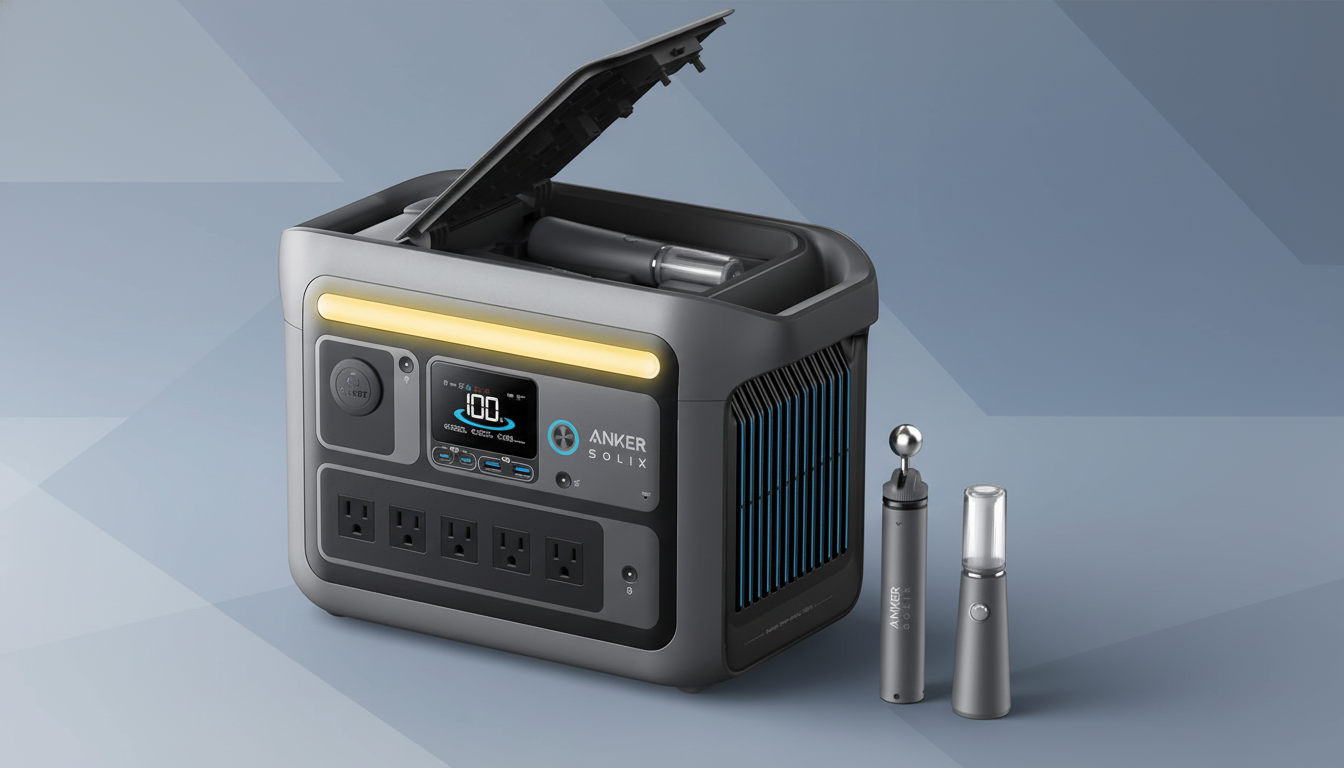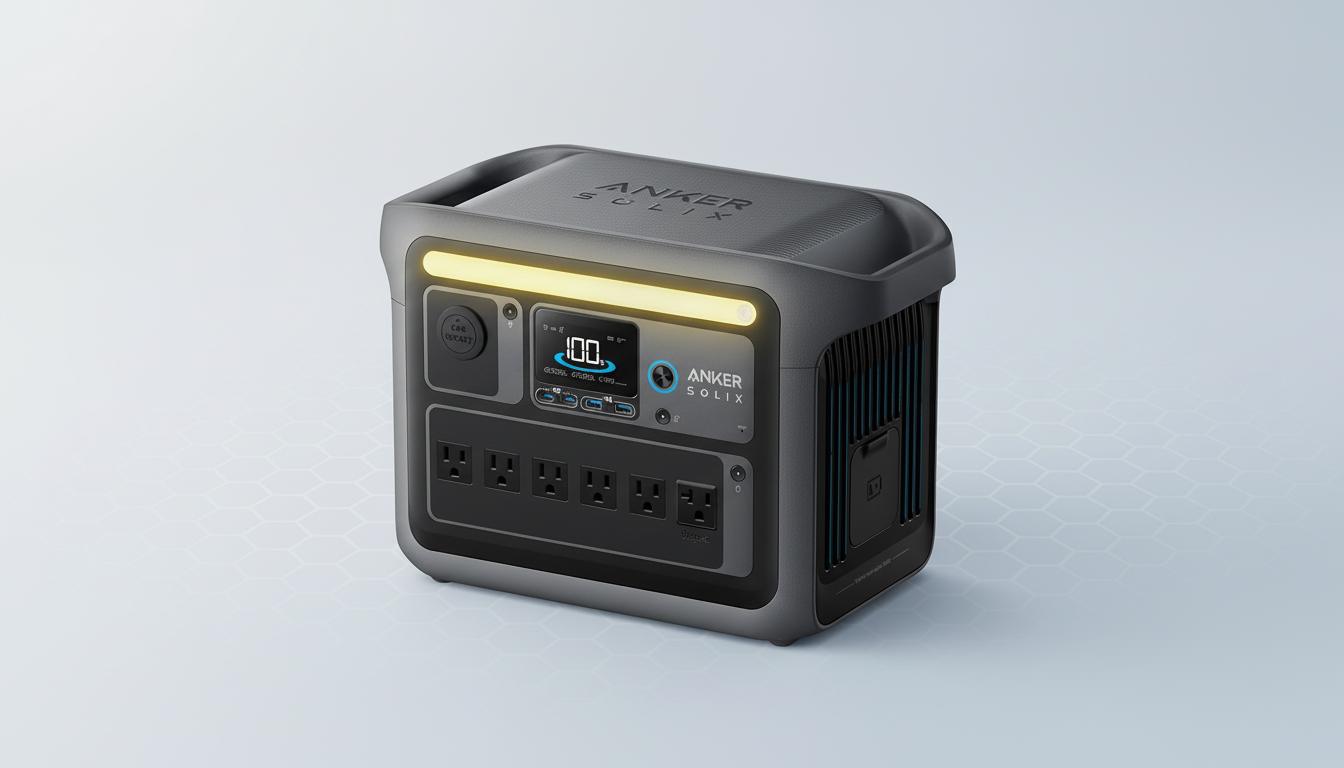A standout portable power station deal just landed: the Anker Solix C800 has dropped to $329, a $270 cut from its list price and the lowest number we’ve seen for this model. It’s an aggressive price at 45% off for a 768Wh LiFePO4 unit with fast charging, ample ports, and solid safety features. The capacity, tech, and cost make this a great option for storm prep, weekend camping, and worksite backup. However, in this capacity class, the value proposition often boils down to dollars per watt-hour. The C800 at $329 comes out to around $0.43/Wh, which edges out most rivals while giving features that matter to power users: rapid AC recharging, solar readiness, and long-cycle battery chemistry.
Why this Anker Solix C800 portable power deal matters
Power interruptions are no longer a rare edge case. According to the U.S. Energy Information Administration, the ordinary American customer faced multiple hours of outages in recent years. These problems will likely worsen as extreme weather and grid stress trends continue to rise. A mid-size station like the C800 can keep core essentials immediately functional through most short events which matters.

The 700-800Wh tier is a great opportunity for shoppers. They are large enough to bear most household basics for a day, yet portable and low-cost to justify as “always ready.” A big part of the exceptional value at a sub-$350 price is to use a modern LiFePO4 pack designed to last, hence the real-world use of the product.
The Solix C800 bundles a 768Wh battery with 1,200W rated AC output and ten total outlets to support laptops, routers, a CPAP, camera gear, and small appliances. Anker rates it to run 89% of typical household devices due to the range of AC sockets and USB-C, USB-A, and 12V car port combinations offered. Rough runtime examples guide expectations. With inverter and conversion losses, here are some approximates:
- A 10W WiFi router will last for 2-3 days.
- A 40W CPAP will last overnight and then some.
- A 60W laptop will run through a full workday.
- A 150W compact fridge cycling for most of a day will reduce the run time expected.
High-draw devices like a hair dryer or space heater will work but drain the pack quickly. Keep them squirreled away for short bursts. Speed, between outages and trips, matters. The C800 can handle AC charging using wall power quickly. The Anker app offers a high-speed mode, allowing for a fast charge that fills the battery in as little as 58 minutes. It will get you almost full before a big storm or when packing your car. Solar input is up to 300W and fast solar recharging. An 80% refill is possible only in about 2.3 hours of strong sun. Actual performance depends on the circumstances, but the National Renewable Energy Laboratory lays the figures legit when you use quality panels under a bright sky. Thus, it is possible to increase runtimes during multi-day camping or prolonged outages by utilizing practical paths.

Battery longevity and build details for Anker Solix C800
Under the hood, Anker’s InfiniPower system uses LiFePO4 cells designed for roughly 3,000 cycles before notable capacity decline – or up to a decade of daily-use durability. Independent evaluators including Consumer Reports have pointed out LiFePO4’s stability and long cycle life compared to older chemistries. That longevity renders the C800 a fantastic buy for anyone planning to recharge every day. Other items of note are the built-in storage nook for little gadgets in the field, an accompanying app for control and monitoring, a pure sine wave inverter for sensitive electronics, and a flurry of temperature, voltage, and overload protection. It’s a sturdy design that prioritizes utility and portability above ruggedness.
How it stacks up against comparable rivals
EcoFlow’s River 2 Pro and other units from Jackery and Bluetti range from $0.60 to $1.00 per watt-hour when not on sale or promotion, such as the $0.43/Wh C800’s pricing. Sacrificing on scale or heavyweight capability for the smaller quick wins is the case for the battery midrange segment.
Who should grab it now
- Renters who can’t install whole-home backup
- Campers who want quiet power
- Freelance crews working on location
- Households prepping for weather-related outages
These are the customers who will all find strong value here. Pair it with a compact solar panel, and it becomes a capable off-grid kit for lights, communications, and cooling essentials. As always, match expectations to capacity: this won’t run central air or a space heater for long, but it will keep you connected, powered, and productive when it matters. At $329—$270 off list—it’s one of the most compelling buys in portable power right now.

